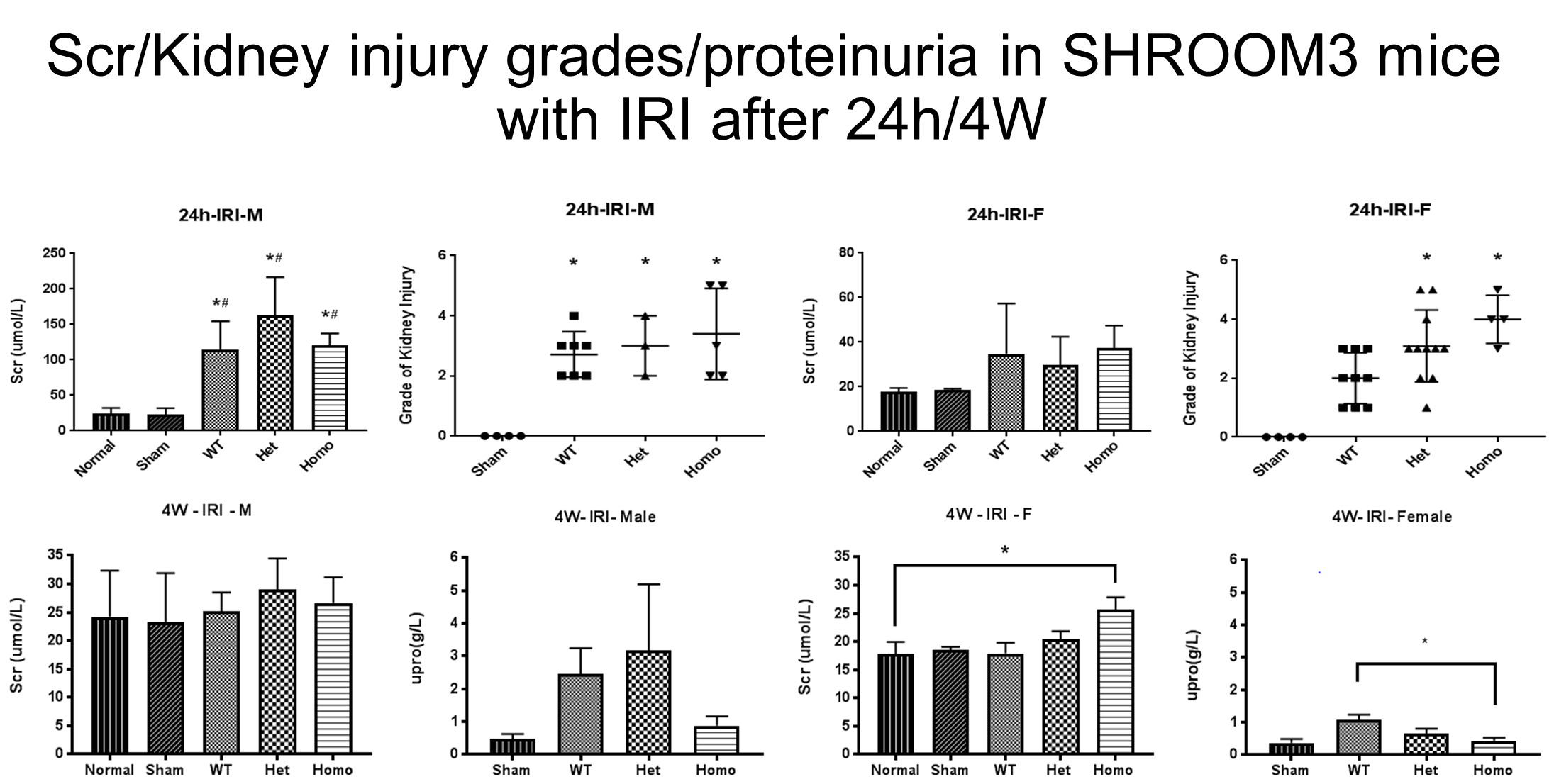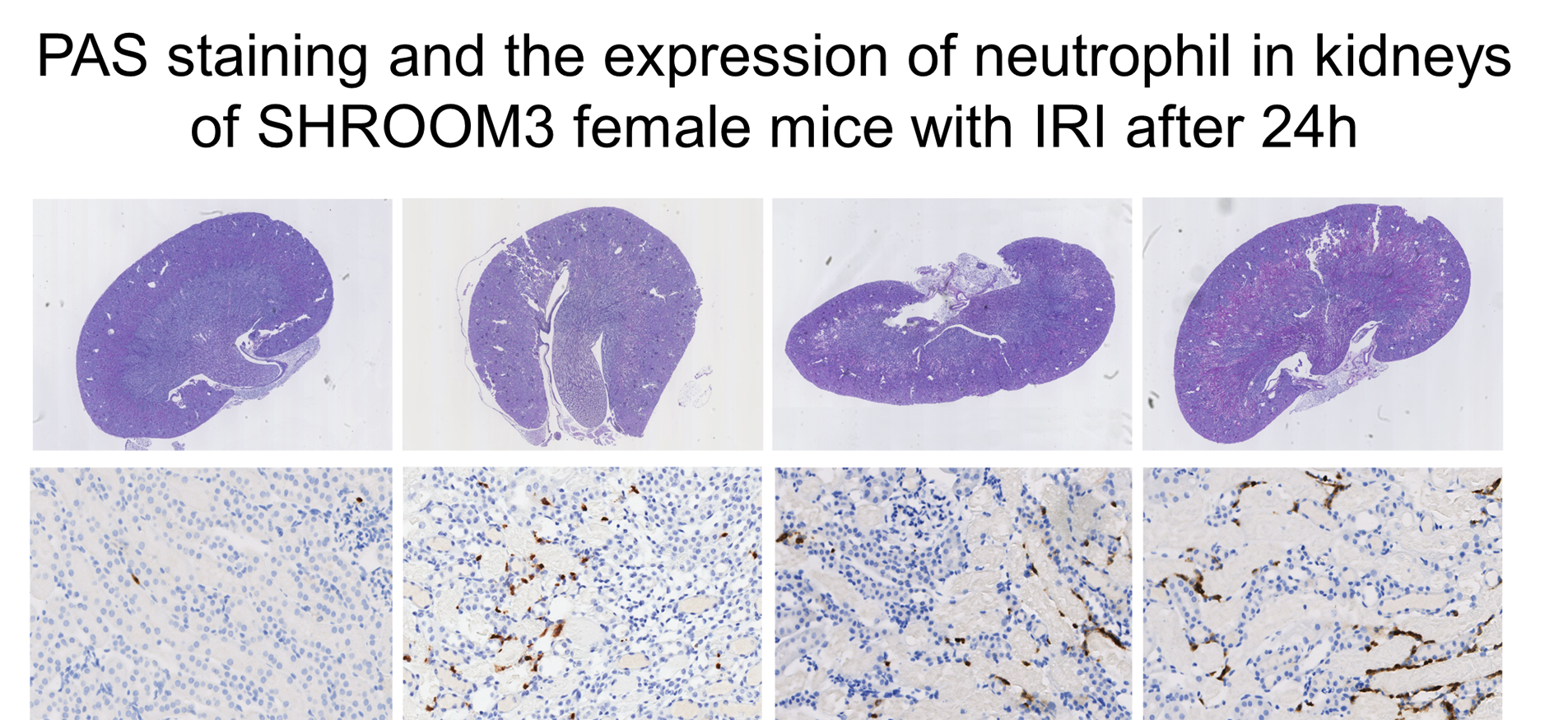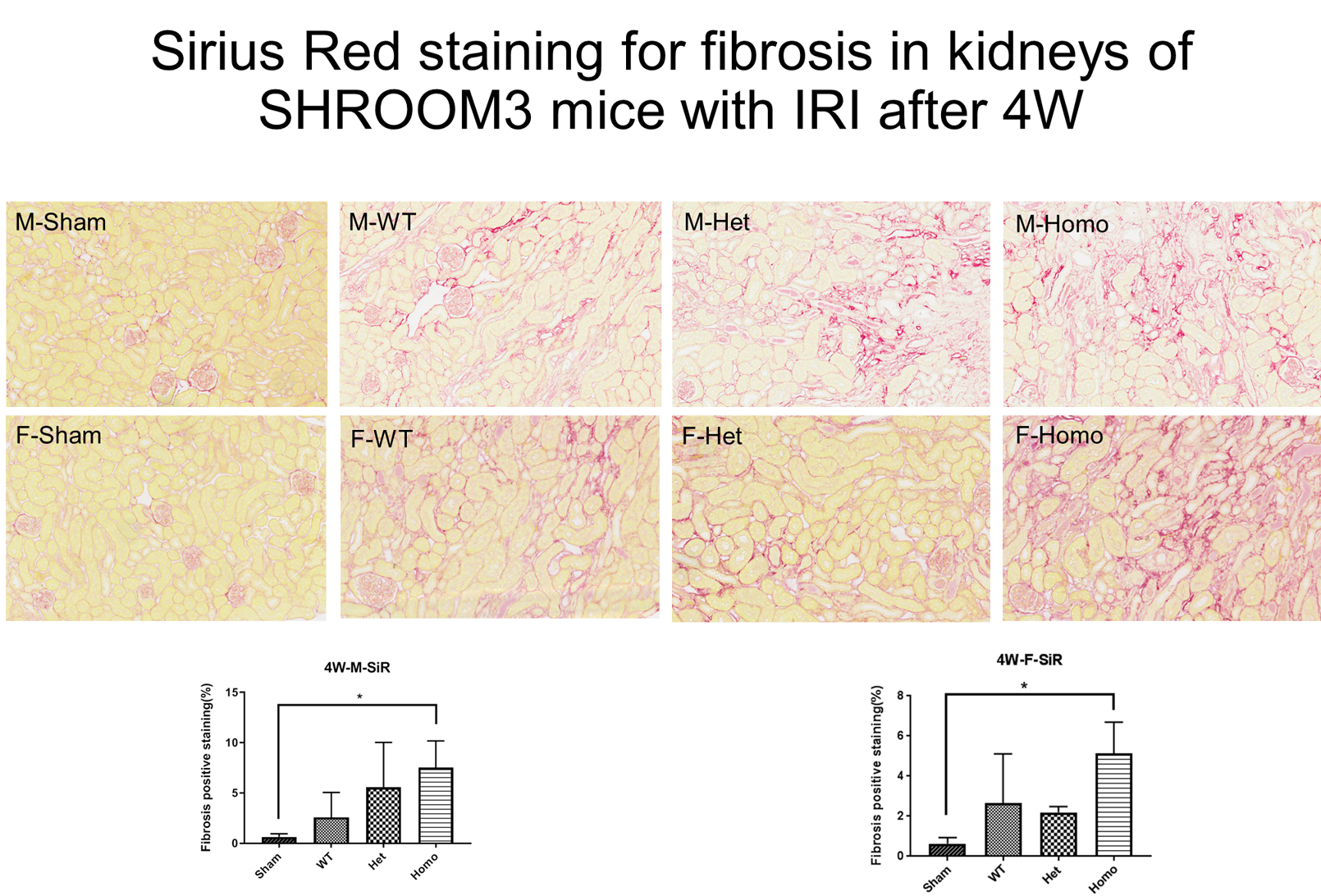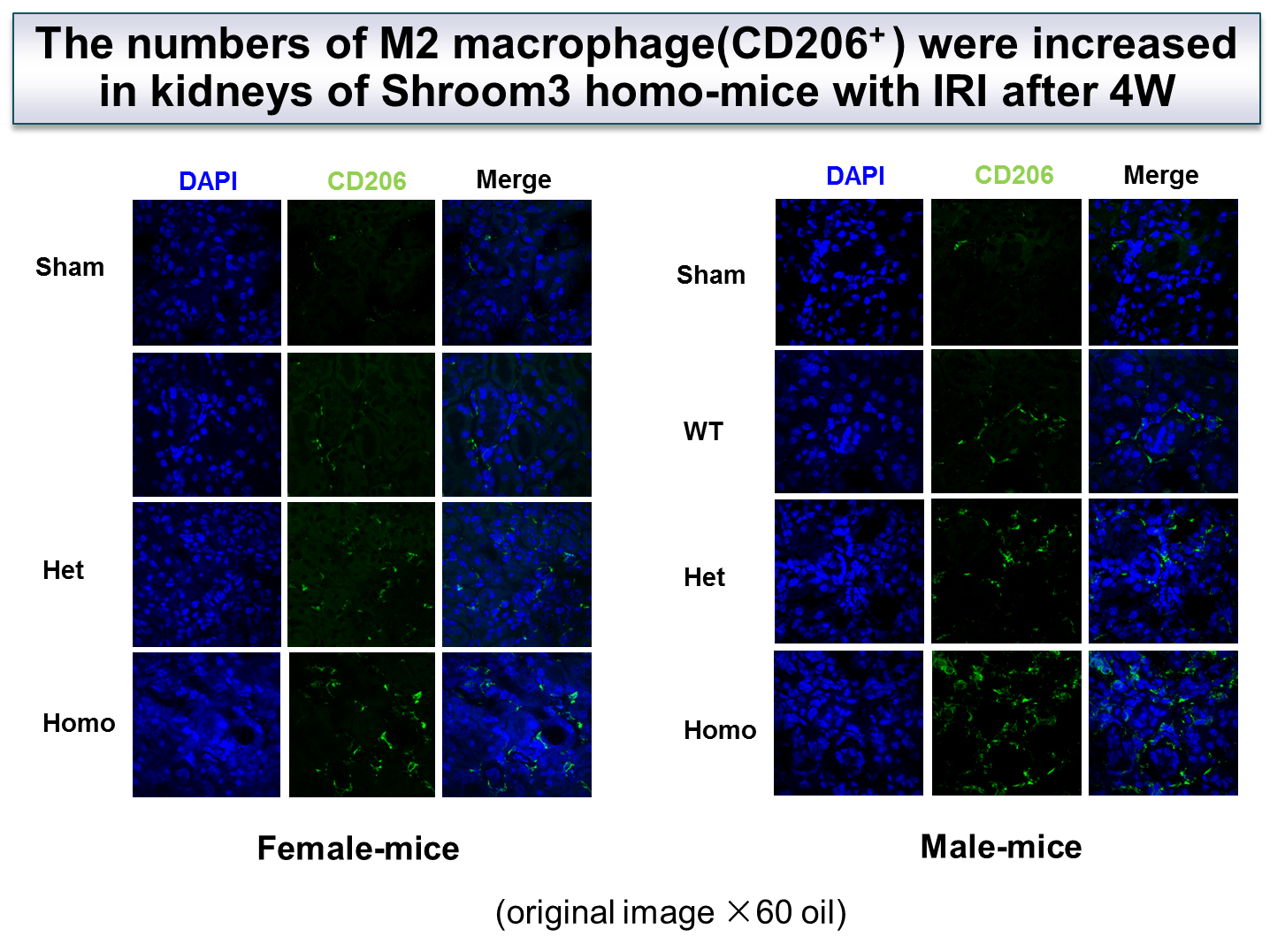A point mutation of SHROOM3 promotes CD206+ macrophage infiltration and kidney fibrosis after ischemia-reperfusion injury
Tianfeng Tang1,5, Bo Lu1, Natasha Rogers1, Guoping Zheng1, Leigh Nicholson1, Qi Cao1, Madhav Menon2, Barbara Murphy2, Stephen I. Alexander3, Min Hu1,4, Philip J. O’connell1.
1Centre for Transplant and Renal Research , Westmead Institute for Medical Research, Sydney, Australia; 2Division of Nephrology, Mount Sinai School of Medicine, New York, NY, United States; 3Centre for Kidney Research, Children's Hospital at Westmead, Sydney, Australia; 4Westmead Clinical School , The University of Sydney, Sydney, Australia; 5Department of Nephrology, Drumtower Hospital, Nanjing University, Nanjing, People's Republic of China
Introduction: A donor SHROOM3 SNP variant was identified with Kidney-transplant fibrosis in humans.
Aim: Investigate the impact of a point mutation of SHROOM3 in kidney-injury and fibrosis in mouse IRI model.
Methods: Both renal-pedicles were occluded for 25 mins at 36.5°C on C57BL/6-mice that were homozygous(C/C), heterozygous(T/C) or WT(T/T) at position 92,951,065 of SHROOM. Samples were assessed after 24h/4wks after IRI.
Results and Discussion: After 24h-IRI, in male-mice, significantly higher serum-creatinine(SCr) and renal- injury grades were observed in all three-genotypes compared to shams(p<0.05). mRNA expression of SHROOM3/TNF-α/IL-6/IL-1β/Cxcl2/Ccl2 was increased in kidneys of CC-mice compared to shams and/or the other two-genotypes(p<0.05). In female-mice, SCr in three-genotypes was not significantly higher than shams suggesting female-mice were more resistant to ischemic-AKI than male-mice. Injury-grades of CT and CC-female-mice were higher than WT/shams(p<0.05).Increased SHROOM3/TNF-α/IL-6 mRNA levels were observed in CC-kidneys compared to shams(p<0.05).
After 4wks, the SCr had improved in both male/female mice. Whilst the SCr in all male-mice had returned to baseline, the SCr in CC female-mice remained higher than shams(p<0.05). The kidneys of CC-mice in both sexes, had worse renal-fibrosis and increased infiltrate of F4/80+CD206+ macrophages compared to Sham and/or WT-mice(p<0.05). Moreover, worse renal-fibrosis was also observed in CT -female-mice. Increased TGF-β1 mRNA levels were observed in CC-kidneys compared to Shams and/or WT-mice in both sexes(p<0.05). Neutrophils(Ly6G+) and CD3+ cells were increased at 24h and 4wks in all-groups with no differences among three-genotypes.




Conclusion: A point mutation of SHROOM3 is a risk genotype for renal fibrosis and this mutation appears to have greater effect in female mice. CD206+ macrophages play an important role on the process of fibrosis.